
By SCOTT FYBUSH
For the eleventh time, we're sitting down at year's end to
summarize another twelve months in the life of broadcasting in
the northeastern U.S. and eastern Canada, and what can we say
about 2005? It was a year of waiting - for Howard to leave, for
HD receivers to arrive, for ABC to announce a buyer, for WTHK
to move, for WKOX to move, for the next shoe to drop in the payola
investigation. It was a good year for Jack and his pals Ben,
Bob and Mike, but not so much for fans of oldies, modern rock
or classical. It was a year to remember the inventor of FM, and
to wonder how soon his invention would be supplanted by any one
of a number of newer technologies vying for listeners' ears.
Let's roll that Top 10 list, shall we?
1. Howard
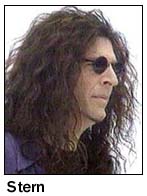 Yeah, yeah, we know
- is there anything more that we could possibly say about
the most prolonged farewell in the history of American broadcasting? Yeah, yeah, we know
- is there anything more that we could possibly say about
the most prolonged farewell in the history of American broadcasting?
Only this: that, for better or for worse, the drawn-out drama
of Stern's relocation to Sirius Satellite Radio was a publicity
bonanza for radio, whether the industry appreciated it or not.
Even the most radio-phobic media outlets felt compelled to write
something about Stern, and the result was more coverage of radio
than the industry's experienced in quite a while. Once again,
say what you will about the self-proclaimed King of All Media,
he had the country talking about - and thinking about - radio,
and it was inevitable that he'd once again be our top story of
the year.
(Now can we talk about something else in 2006?)
2. Up In The Sky
Once Stern signs on at Sirius, we're cautiously hopeful that
the buzz around Howard himself will die down. As we'll explore
later on in our Year-End Rant, though, the buzz around satellite
radio in general is still building, and even before Stern's arrival,
2005 marked something of a watershed in that respect, as both
services grew from curiosities into serious competitors, with
programming and marketing strategies that posed a challenge to
"terrestrial" radio - itself a term that was all but
unknown before 2005.
3. Hello, "Jack." Goodbye, Oldies.
As 2005 began, "Jack FM" was a "somewhere else"
concept for most radio people in the northeast. Sure, it had
started as a webcast on Long Island, but it was on the air only
on a few Canadian signals and a handful of U.S. stations outside
the region.
That began to change in the spring, as "Jack" clones
popped up in Rochester ("Fickle") and Boston ("Mike").
Then came Philadelphia ("Ben") and Burlington ("MP103").
And then, on the evening of June 8, to the strains of Sinatra's
"Summer Wind," Infinity pulled the plug on more than
three decades of oldies at New York's WCBS-FM (101.1), rolling
the dice on "Jack" itself in the nation's biggest market
and touching off a wave of outrage among some of the country's
most passionate radio fans. (Later in the year, "Jack"
would also appear in Buffalo, while "Bob" would show
up in Pittsburgh.)
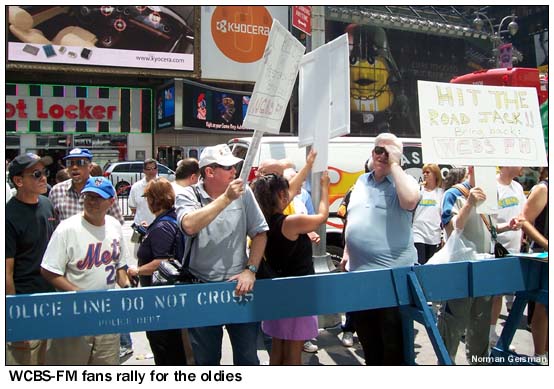
New York's new "Jack" was not an immediate success,
but that didn't make the pill any easier to swallow for fans
of the oldies, who suddenly had nowhere to turn in New York to
hear much of anything that predated the late sixties. Their pain
was shared in other markets, too, as oldies vanished from the
airwaves in Rochester and Hartford and as other stations shunned
the "O-word" and refocused on hits from the seventies
and later.
Will oldies become an AM niche format, relegated to Saturday
nights on WABC and weak suburban signals? Will "Jack"
settle in to become a permanent part of the New York City landscape?
Those are sure to be top stories as we head into 2006.
4. As easy as ABC?
 The biggest sale
of the year, bar none, was the one that didn't happen. For much
of the year, Disney kept the trade papers hopping with speculation
about which lucky suitor would walk away with its ABC Radio division,
including big signals such as WABC, WPLJ and WLS. Would it be
Cumulus? Entercom? Emmis? The biggest sale
of the year, bar none, was the one that didn't happen. For much
of the year, Disney kept the trade papers hopping with speculation
about which lucky suitor would walk away with its ABC Radio division,
including big signals such as WABC, WPLJ and WLS. Would it be
Cumulus? Entercom? Emmis?
The answer, of course (at least as of 4 PM on December 31),
turned out to be "none of the above," as Disney failed
to come to terms with any of those groups, leaving ABC Radio
still on the market - and the rumor mill still churning - at
year's end.
5. WCRB hits the market
 The biggest sale
of the year that actually came to pass (or at least came close
to passing) was, by contrast, a complete surprise to just about
everyone. After all, everyone knew - or thought they knew - that
when WCRB owner Ted Jones died a decade ago, he locked the Boston
classical station into a 99-year trust that guaranteed that the
station would still be playing Mozart and Bach as the 21st century
was drawing to a close. The biggest sale
of the year that actually came to pass (or at least came close
to passing) was, by contrast, a complete surprise to just about
everyone. After all, everyone knew - or thought they knew - that
when WCRB owner Ted Jones died a decade ago, he locked the Boston
classical station into a 99-year trust that guaranteed that the
station would still be playing Mozart and Bach as the 21st century
was drawing to a close.
Turns out the trust wasn't quite so ironclad, leaving the
door open for Charles River Broadcasting to put itself up for
sale in November. The company quickly selected Greater Media
as its preferred buyer for WCRB's big class B signal, setting
the table for a deal (expected to be in the neighborhood of $100
million) to be completed early in 2006. It's almost certain to
mean the end of WCRB's classical format - and to put Greater
Media's WKLB (99.5 Lowell) on the market, triggering a new round
of sales and format speculation.
6. Whatever happened to modern rock?
 It wasn't just classical (or oldies)
that was threatened as 2005 drew to a close. Fans of modern rock
were having a harder time finding their music on the air, too,
as a combination of a lack of exciting new music and several
external factors (there's Howard again) pushed the format off
the air in several big markets. New York's WXRK reimaged as an
active rocker in the spring, sending the modern rock off to a
webstream. The demise of the Stern show, an anchor for many modern
rock stations, knocked a few more signals off the format, with
Albany's WQBK/WQBJ going to classic rock and Philly's WYSP ditching
most of what was left of its music to become a talker. It had
already been a bad year in Philly, with the demise of Radio One's
Y100 (WPLY), whose fans staged a big rally to protest its loss.
It apparently wasn't big enough, though, as no other station
stepped up to the plate to try to pick up that audience. It wasn't just classical (or oldies)
that was threatened as 2005 drew to a close. Fans of modern rock
were having a harder time finding their music on the air, too,
as a combination of a lack of exciting new music and several
external factors (there's Howard again) pushed the format off
the air in several big markets. New York's WXRK reimaged as an
active rocker in the spring, sending the modern rock off to a
webstream. The demise of the Stern show, an anchor for many modern
rock stations, knocked a few more signals off the format, with
Albany's WQBK/WQBJ going to classic rock and Philly's WYSP ditching
most of what was left of its music to become a talker. It had
already been a bad year in Philly, with the demise of Radio One's
Y100 (WPLY), whose fans staged a big rally to protest its loss.
It apparently wasn't big enough, though, as no other station
stepped up to the plate to try to pick up that audience.
7. HD Radio - if not now, when?
So how to serve all those oldies and modern rock and classical
and country fans who feel deserted by traditional radio? The
December announcement of an alliance among many of the big broadcast
groups provided one possible answer, as they promised to join
forces to provide some of those niche formats on HD Radio subchannels
of their FM signals - and, perhaps more critically, to put some
real promotional muscle behind the digital radio system, which
ended the year lagging far behind satellite radio in receiver
availability and audience awareness.
On the other side of the equation, broadcasters worked diligently
to break the chicken-and-egg dilemma by getting HD signals on
the air across the region, so once those receivers get out there,
there'll at least be something for them to listen to.
(Much more on this in the Year-End Rant, at the end of our
Year in Review...)
8. Payola
 Yes, it was 2005,
not 1959, but payola was nevertheless in the news for much of
the year, largely thanks to New York attorney general (and 2006
gubernatorial front-runner) Eliot Spitzer, who conducted heavily-publicized
investigations that led to settlements with Sony Music and Warner
Music and the dismissals of several prominent program directors. Yes, it was 2005,
not 1959, but payola was nevertheless in the news for much of
the year, largely thanks to New York attorney general (and 2006
gubernatorial front-runner) Eliot Spitzer, who conducted heavily-publicized
investigations that led to settlements with Sony Music and Warner
Music and the dismissals of several prominent program directors.
Were laws broken? Undoubtedly - but the argument could also
be made that it's been many years since the top-40 industry lived
or died on the artistic quality of the music, and that the promotional
practices of the music industry, while certainly embarrassing
to many of the parties involved, were hardly a threat to the
Republic. Or maybe we're just disappointed that we didn't get
the big-screen TVs and the junkets to Miami...
9. High School FMs
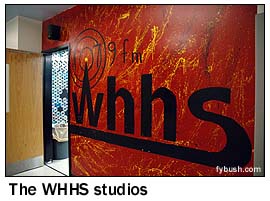 Often forgotten
among the bigger signals that dominate the dial, several high
school FM stations made headlines in the region during 2005.
In Havertown, near Philadelphia, WHHS (107.9) was threatened
with extinction after 55 years on the air when Radio One's new
WRNB showed up on the same frequency, but thanks to local engineers
who cared about the station's history, it was able to apply for
and win a waiver that allowed it to move to 99.9 and stay alive. Often forgotten
among the bigger signals that dominate the dial, several high
school FM stations made headlines in the region during 2005.
In Havertown, near Philadelphia, WHHS (107.9) was threatened
with extinction after 55 years on the air when Radio One's new
WRNB showed up on the same frequency, but thanks to local engineers
who cared about the station's history, it was able to apply for
and win a waiver that allowed it to move to 99.9 and stay alive.
In Coventry, R.I., WCVY (91.5) faced competition at license
renewal time from a religious broadcaster that wanted to share
its airtime. Unlike other similar situations in the midwest,
where stations have gone full-time and fended off the competing
applicants, Coventry decided to settle rather than fight, so
91.5 will be shared between Coventry High and the new religious
broadcaster beginning next year.
And in Maynard, Mass., WAVM (91.7) made national headlines
with its fight to win an upgrade from class D to class A, in
the face of competing applications from several out-of-town religious
broadcasters. WAVM was dealt a blow in the fall when the FCC
granted "tentative preference" to Living Proof's application
for a new 91.7 in Lunenburg, but with political pressure building
in favor of the little community station that's been broadcasting
for 35 years now, Living Proof offered a settlement at year's
end that could allow for multiple class A signals on 91.7, albeit
at the expense of a complex (and possibly impossible) directional
antenna for WAVM and significant new interference to Boston's
WUMB. We'll be hearing more about this story in 2006, too.
10. Honoring the Major
One of radio's greatest inventors finally got the recognition
he deserved in 2005, as history buffs and contemporary engineers
joined forces to properly honor Major Edwin Howard Armstrong,
70 years after his first FM broadcasts.
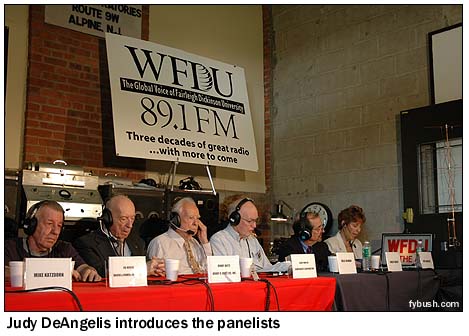
The highlight of the year's activities came on June 11, when
hundreds of Armstrong fans spent the afternoon at the Major's
historic tower site on the New Jersey Palisades - and thousands
more tuned in on WFDU (89.1) and experimental station WA2XMN,
on the Major's original 42.8 frequency - for a live panel discussion
and commemorative programming.
Later in the year, WA2XMN was granted a five-year experimental
license, and a second panel discussion at the Audio Engineering
Society convention (with your editor as moderator) provided more
insight into the legacy of the man who gave the world frequency
modulation.

The Year in Sales
JANUARY: Access.1 added to its Jersey Shore cluster
with the $5 million purchase of WJSE (102.7 Petersburg NJ) from
Parinello Enterprises. In Connecticut, the WKZE AM-FM combo changed
hands from Scott Johnson to Will Stanley, who'd move the stations'
studios across the state line to New York's Hudson Valley at
year's end. On a smaller scale, Robert Pfuntner's Pembrook Pines
group made its first of two purchases in 2005, the $950,000 purchase
of Olean combo WOEN/WMXO from Vox. Clarion County Broadcasting
picked up WKQW AM-FM in Oil City, PA from Stephen Olszowka, for
$540,000. Public broadcaster WAMC added to its network with the
$275,000 purchase of WRUN (1150 Utica NY) from Regent.
 And in Canada,
Astral and Corus finally pulled off a long-stalled (and oft-reworked)
C$11 million deal that transferred the Radiomedia chain of AM
stations (including Montreal's CKAC and Quebec's CHRC) from Astral
to Corus, while Corus transferred several FMs in smaller Quebec
communities to Astral. And in Canada,
Astral and Corus finally pulled off a long-stalled (and oft-reworked)
C$11 million deal that transferred the Radiomedia chain of AM
stations (including Montreal's CKAC and Quebec's CHRC) from Astral
to Corus, while Corus transferred several FMs in smaller Quebec
communities to Astral.
FEBRUARY: The month kicked off with one of the bigger
deals in the region for 2005, as Qantum added Ernie Boch's WXTK
(95.1 West Yarmouth) and WCOD (106.1 Hyannis) to its existing
Cape Cod cluster for $21.3 million (putting three smaller stations,
WPXC and WTWV/WDVT, in trust for eventual sale.)
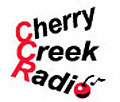 On Long Island's
East End, Cherry Creek entered the market by buying AAA's four
FMs for $12 million. Davidson entered western Massachusetts with
the $6.8 million purchase of Antonio Gois' WACM and WSPR in Springfield. On Long Island's
East End, Cherry Creek entered the market by buying AAA's four
FMs for $12 million. Davidson entered western Massachusetts with
the $6.8 million purchase of Antonio Gois' WACM and WSPR in Springfield.
A few smaller transactions: Clear Channel bought WSPI (99.7
Mount Carmel PA) from H&P Communications for $460,000, while
Susquehanna bought WTHM (1440 Red Lion PA) from the Moffit family
for $280,000.
And Mega Communications closed out the month with the announcement
of the $9 million sale of WAMG/WLLH in the Boston market to the
investment firm Waller Sutton.
MARCH: Just two big deals, both in Pennsylvania: Bold
Gold Media Group entered the scene with its $4 million purchase
of WDNH/WYCY/WPSN/WDNB in the Honesdale, Pennsylvania market
from De Wit, while a swap between Nick Galli's 2510 group and
Forever found Forever paying $4 million for WGLU/WQKK in Johnstown
and $2.65 million for WRSC/WBUS in State College, while 2510
paid $2.5 million for WSPO/WUZI/WUZY in Johnstown.
APRIL: Vox exited Bennington, Vermont with the sale
of WZEC (97.5 Hoosick Falls NY) to Capitol Media (WHAZ). Two
tiny religious stations were sold - WLOG (89.1 Markleysburg PA)
from Lighthouse Christian Academy to Edgewater Broadcasting,
for $10,000, and WKMY (91.1 Winchendon MA) from Friends of Radio
Maria to EMF, for $15,000. In Canada, Blackburn bought out the
Chatham trio of CFCO/CKUE/CKSY from Bea-Ver Communications.
 MAY: Vox continued
its exit from the scene with the $7 million sale of WBEC-FM (105.5
Pittsfield, with a pending move to Easthampton) to Pamal. On
Long Island, silent WGSM changed hands from Atmor Properties
to Win Radio Properties, for $2.2 million. The Rice family exited
radio in eastern Connecticut, selling WILI AM-FM to Hall for
$1.8 million. Two small Pennsylvania AMs changed hands - WLYC
(1050 Williamsport) from James McKowne to Sentry Communications,
for $75,000, and WKMC (1370 Roaring Spring) from Cary Simpson's
Allegany Mountain Network to Handsome Brothers, Inc. for $80,000.
Another Pennsylvania broadcaster exited the scene, as Al Dame
sold his Chambersburg-Hagerstown cluster of five stations to
Dan Savadove's Main Line Broadcasting, for $22.5 million. MAY: Vox continued
its exit from the scene with the $7 million sale of WBEC-FM (105.5
Pittsfield, with a pending move to Easthampton) to Pamal. On
Long Island, silent WGSM changed hands from Atmor Properties
to Win Radio Properties, for $2.2 million. The Rice family exited
radio in eastern Connecticut, selling WILI AM-FM to Hall for
$1.8 million. Two small Pennsylvania AMs changed hands - WLYC
(1050 Williamsport) from James McKowne to Sentry Communications,
for $75,000, and WKMC (1370 Roaring Spring) from Cary Simpson's
Allegany Mountain Network to Handsome Brothers, Inc. for $80,000.
Another Pennsylvania broadcaster exited the scene, as Al Dame
sold his Chambersburg-Hagerstown cluster of five stations to
Dan Savadove's Main Line Broadcasting, for $22.5 million.
JUNE: The Vox exodus continued into June, as the company
LMA'd WNYQ (105.7 Queensbury NY) to Pamal, which sent Albany's
WZMR and its own Glens Falls stations into a trust. (A subsequent
$5.75 million sale of WNYQ to Pamal was held up at the FCC at
year's end.)
 In the Catskills, the Blabey family
sold WVOS AM-FM in Liberty to Watermark Broadcasting, for $1.7
million. In Maine, Clear Channel sold WNSX (97.7 Winter Harbor)
to Mark Osborne's Stony Creek, for $800,000, while Fisher &
Doak sold WKTJ (99.3 Farmington) to Clearwater Communications,
for $450,000. Tom Monaghan's Absolute Broadcasting bought WSNH
(900 Nashua NH) from Balance View for $925,000. Nick Galli's
2510 sold WBLF (970 Bellefonte PA) to Magnum Broadcasting, for
$150,000. On the Ohio/Pennsylvania line, steel magnate Harold
Glunt took over WEXC/WGRP in Greenville, PA and WANR in Warren,
OH from Michael Arch for $5,000 and the assumption of debt. In the Catskills, the Blabey family
sold WVOS AM-FM in Liberty to Watermark Broadcasting, for $1.7
million. In Maine, Clear Channel sold WNSX (97.7 Winter Harbor)
to Mark Osborne's Stony Creek, for $800,000, while Fisher &
Doak sold WKTJ (99.3 Farmington) to Clearwater Communications,
for $450,000. Tom Monaghan's Absolute Broadcasting bought WSNH
(900 Nashua NH) from Balance View for $925,000. Nick Galli's
2510 sold WBLF (970 Bellefonte PA) to Magnum Broadcasting, for
$150,000. On the Ohio/Pennsylvania line, steel magnate Harold
Glunt took over WEXC/WGRP in Greenville, PA and WANR in Warren,
OH from Michael Arch for $5,000 and the assumption of debt.
On TV, C-22 License Subsidiary sold WVNY (Channel 22) in Burlington,
Vermont to Lambert Broadcasting for $10.5 million, which put
the station into a joint operation with Fox affiliate WFFF.
JULY: Schenectady public broadcaster WMHT added a second
FM in the market, buying commercial WBKK (97.7 Amsterdam) from
GEM Associates for $1.5 million. In northern Pennsylvania, Iorio
Broadcasting paid Kinzua Broadcasting $1.25 million for WRRN/WKNB/WNAE
in Warren. Absolute Broadcasting created a Nashua duopoly with
the $250,000 purchase of dark WSMN (1590). And Redeemer Broadcasting
paid a dollar for Christian Ministry Associates' WFSO (88.3 Olivebridge
NY).
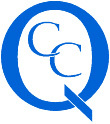 AUGUST: Qantum
spun its "extra" Cape Cod stations - WPXC and WDVT/WTWV
- to Nassau for a cool $10 million. In Pennsylvania, Cantroair
Communications paid $350,000 for WTTC AM-FM in Towanda, while
Eric Swidler paid Allegany Mountain Network $65,000 for WEEO
(1480 Shippensburg). AUGUST: Qantum
spun its "extra" Cape Cod stations - WPXC and WDVT/WTWV
- to Nassau for a cool $10 million. In Pennsylvania, Cantroair
Communications paid $350,000 for WTTC AM-FM in Towanda, while
Eric Swidler paid Allegany Mountain Network $65,000 for WEEO
(1480 Shippensburg).
SEPTEMBER: The big news was in Burlington, where Hall
nearly doubled its market presence with the $17 million purchase
of WBTZ/WIZN from Burlington Broadcasters, while WWBI-LP across
the lake in Plattsburgh went from SMC Communications to Daystar
(Word of God Religious Fellowship) for $1.2 million. Double O
added to its Oneonta presence with the $3.8 million purchase
of WDOS/WSRK from Ultimate Communications. William Macek's Central
Broadcasting paid $795,000 for WEIM in Fitchburg, and New Jersey
noncomm WFJS (ex-WDDM, ex-WCNJ) changed hands from WVRM, Inc.
to Domestic Church Media Foundation for $500,000.
OCTOBER: One of the biggest deals of the year found
Nassau exiting the Lehigh Valley and Poconos with the $62.8 million
sale of its clusters there to Access.1 Communications. Down the
road in Philadelphia, Mega departed the region with the $8.75
million sale of WEMG (1310 Camden NJ) to Davidson. Carter Broadcasting
exited Providence by selling WRIB (1220) to Faith Christian Center,
for $1.9 million. In Pittsburgh, Starboard turned its LMA of
WZUM (1590) into ownership, buying the station from Michael Horvath
for $435,000. EMF added WWJS (90.1 Watertown NY) to the K-Love
family for $300,000. And Peter George paid Nichols College $1,000
for little WXRB (95.1 Dudley MA).
NOVEMBER: The very biggest deal of the year to affect
NERW-land was the end of the Susquehanna group, as parent company
Susquehanna Pfaltzgraff agreed to sell its radio holdings (including
stations in York, PA) to Cumulus, for $1.2 billion.
 Up the road
in Milton, Milton-Lewisburg Broadcasting sold WMLP/WVLY-FM to
Sunbury Broadcasting for $3 million. In the Rochester market,
EMF bought WMJQ (104.9 Brockport) from George Kimble for $4 million,
while CSN unloaded WJCA (102.1 Albion) to Jimmy Swaggart's Family
Worship Center for $950,000. And in the Southern Tier, Bob Pfuntner's
Pembrook Pines group added Catt Communications' WQRT/WGGO Salamanca
to its Olean cluster (WOEN/WMXO and WZKZ) for $1.25 million. Up the road
in Milton, Milton-Lewisburg Broadcasting sold WMLP/WVLY-FM to
Sunbury Broadcasting for $3 million. In the Rochester market,
EMF bought WMJQ (104.9 Brockport) from George Kimble for $4 million,
while CSN unloaded WJCA (102.1 Albion) to Jimmy Swaggart's Family
Worship Center for $950,000. And in the Southern Tier, Bob Pfuntner's
Pembrook Pines group added Catt Communications' WQRT/WGGO Salamanca
to its Olean cluster (WOEN/WMXO and WZKZ) for $1.25 million.
DECEMBER: The FCC approved the sale of Doug Lane's
WWRR/WICK/WYCK in Scranton to Bold Gold, for $1.9 million. And
Verstandig donated silent WHGT (1590 Chambersburg) to Emmanuel
Baptist Temple of Hagerstown, Maryland.
The Year in Programming,
People and Calls
JANUARY: The new year marked the return of several
dark stations, with WCDL (1440 Carbondale PA) returning under
Route 81 ownership from new downtown studios with classic country,
and WAPJ (89.9 Torrington CT) also moving to new studios. In
Glens Falls, the WENU AM-FM combo segued from standards to soft
AC, while WLYC (1050 Williamsport PA) went from standards to
ESPN.
The first bombshell moves of the new year came in the month's
second week, when Citadel pulled Howard Stern from its stations
(including WAQX in Syracuse and WQXA in York), saying the show
had become too much of an ad for Stern's move to satellite, still
a year away at that point.
 Some high-profile
personalities lost their jobs - Dave Universal at Entercom in
Buffalo as the winds of a payola investigation began to swirl,
and Frankie Blue at WNEW after an apparently inebriated post-holiday
party on-air appearance. Miss Jones and her WQHT crew didn't
lose their jobs, but they were pulled off the air for a while
after an ill-conceived tsunami parody song. In Boston, Liz Walker
left the anchor desk at WBZ-TV very much of her own accord, continuing
to do a Sunday public-affairs show for the station. Some high-profile
personalities lost their jobs - Dave Universal at Entercom in
Buffalo as the winds of a payola investigation began to swirl,
and Frankie Blue at WNEW after an apparently inebriated post-holiday
party on-air appearance. Miss Jones and her WQHT crew didn't
lose their jobs, but they were pulled off the air for a while
after an ill-conceived tsunami parody song. In Boston, Liz Walker
left the anchor desk at WBZ-TV very much of her own accord, continuing
to do a Sunday public-affairs show for the station.
In other TV news, Rochester's WOKR (Channel 13) finally changed
calls to WHAM-TV on January 10, with the WOKR calls replacing
WUCL on 93.5 in Remsen.
On the radio dial, WOQL (98.7 Winchester NH) and WINQ (97.7
Winchendon MA) swapped calls and formats, as 97.7 moved closer
to Keene (opening the way for another 97.7 to make a big move
later in the year.) Across the river, WKVT (1490 Brattleboro)
picked up progressive talk, and down on the South Coast, UMass
Dartmouth picked up the "WUMD" calls for its new 89.3
signal.
 In Pennsylvania,WRRK
(96.9 Braddock) emerged from stunting as the "new 97RRK,"
which didn't sound all that different from the old 'RRK. The
first of many shuffles in Johnstown saw WKYE's AC move from 95.5
to 96.5, with WMTZ's country moving to 95.5 as "Froggy,"
WFGI-FM. In Chambersburg, silent WCBG (1590) became WHGT, swapping
calls with 1380 in Waynesboro. Up in Renovo, WZYY (106.9) moved
from hot AC to rock as "the Surge." In Pennsylvania,WRRK
(96.9 Braddock) emerged from stunting as the "new 97RRK,"
which didn't sound all that different from the old 'RRK. The
first of many shuffles in Johnstown saw WKYE's AC move from 95.5
to 96.5, with WMTZ's country moving to 95.5 as "Froggy,"
WFGI-FM. In Chambersburg, silent WCBG (1590) became WHGT, swapping
calls with 1380 in Waynesboro. Up in Renovo, WZYY (106.9) moved
from hot AC to rock as "the Surge."
And in Canada, the venerable CHOW calls disappeared from "Spirit
91.7" in Welland, which became adult hits "Giant FM"
under new extra-large calls CIXL.
FEBRUARY: Nassau kicked off the month by shuffling
formats in Concord and the Lakes Region, moving country from
WOTX (102.3) to the former WNHI (93.3 Belmont) as WNHW ("The
Wolf") and putting classic rock on 102.3 (now WWHK) and
101.5 (changing from WBHG to WWHQ) as "the Hawk." Over
in Maine, WHQO (107.9 Skowhegan) went from talk to "Mix"
AC for a day, then to sports.
 Valentine's Day
weekend brought some changes in the Hudson Valley, where Clear
Channel's WFKP (99.3 Ellenville) dropped "Kiss," stunted
as "Cupid" and emerged as another "Lite FM."
Down the river in northern Westchester County, WFAF (106.3 Mount
Kisco) stunted as "Flix 106" before beginning a simulcast
of Poughkeepsie's WPDH. Newburgh's WGNY-FM (103.1) began simulcasting
with WTSX (96.7 Port Jervis) as "the Fox," while WGNY
(1220) began simulcasting its oldies on WDLC (1490 Port Jervis).
Down on the Jersey Shore, WBBO (98.5 Ocean Acres) flipped to
a simulcast of modern rock WHTG-FM (106.3 Eatontown) a few days
later. In Carlisle, PA, WHYL (960) flipped from standards to
talk, which wouldn't last the year. Valentine's Day
weekend brought some changes in the Hudson Valley, where Clear
Channel's WFKP (99.3 Ellenville) dropped "Kiss," stunted
as "Cupid" and emerged as another "Lite FM."
Down the river in northern Westchester County, WFAF (106.3 Mount
Kisco) stunted as "Flix 106" before beginning a simulcast
of Poughkeepsie's WPDH. Newburgh's WGNY-FM (103.1) began simulcasting
with WTSX (96.7 Port Jervis) as "the Fox," while WGNY
(1220) began simulcasting its oldies on WDLC (1490 Port Jervis).
Down on the Jersey Shore, WBBO (98.5 Ocean Acres) flipped to
a simulcast of modern rock WHTG-FM (106.3 Eatontown) a few days
later. In Carlisle, PA, WHYL (960) flipped from standards to
talk, which wouldn't last the year.
But the big fireworks on Valentine's Day came in Trenton,
where top 40 WPST abandoned its longtime home on 97.5 to trade
dial positions with WTHK (94.5 the Hawk), assuring WPST a continued
spot on the Trenton dial once the 97.5 facility makes its move
to Philadelphia.
That, in turn, was overshadowed a week or so later when Radio
One abruptly pulled the plug on modern rock WPLY (100.3 Media),
moving urban WPHI from 103.9 to the stronger 100.3 signal and
launching a black gospel format under the WPPZ calls on 103.9.
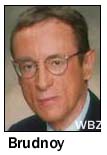 In Rochester,
morning institution Brother Wease announced he had a rare sinus
cancer, which sent him to New York City for treatment (though
he remained on the air through the ordeal, broadcasting from
his apartment in the city, and at year's end was recovering well.)
Rochester remembered another morning man, WBEE's Bill Coffey,
at a memorial service, while in Boston, thousands packed the
Majestic Theater to remember WBZ's David Brudnoy. In Rochester,
morning institution Brother Wease announced he had a rare sinus
cancer, which sent him to New York City for treatment (though
he remained on the air through the ordeal, broadcasting from
his apartment in the city, and at year's end was recovering well.)
Rochester remembered another morning man, WBEE's Bill Coffey,
at a memorial service, while in Boston, thousands packed the
Majestic Theater to remember WBZ's David Brudnoy.
In Portland, veteran WBLM (102.9) morning man Mark Persky
disappeared from the airwaves, though his departure from the
station wouldn't become official until April. He'd return to
the air on competitor WFNK, but not for very long.
And in Nashua, WSMN (1590) signed off from its three-tower
array for the last time at 6 PM on February 1, though rumors
of its demise would prove to be greatly exaggerated.
MARCH: Even with a scorecard, the format changes in
State College, Johnstown and Altoona were tough to follow. In
Happy Valley, rocker WQWK (97.1) and oldies WOWY (98.7) traded
places, while WJHT (Hot 107.9) moved down the dial to displace
WBHV (103.1), leaving 107.9 stunting under the WCNU calls for
a while before becoming a "K-Love" outlet as WKVB.
Johnstown's WGLU, Altoona's WPRR and Mount Union's WXMJ all
became "Hot" as well, with new calls WYOT, WWOT and
WXOT respectively. Two of those former calls got parked on AMs
- WBHV on the former WYSN in Somerset, WPRR on the former WSPO
1490 in Johnstown.
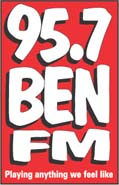 At the other
end of the state, a skirmish between Nassau and Verstandig created
two "Eagle" stations, briefly. Nassau won, as WARX
(106.9 Hagerstown MD) kept the Eagle name and new WWEG calls,
while Verstandig's WWMD (101.5 Waynesboro PA) had to drop its
new WEEG calls, becoming WFYN, "Classic Rock 101.5."
WWMD's former hot AC format migrated down the dial to the former
WSRT (92.1), which became WPPT, "The Point." At the other
end of the state, a skirmish between Nassau and Verstandig created
two "Eagle" stations, briefly. Nassau won, as WARX
(106.9 Hagerstown MD) kept the Eagle name and new WWEG calls,
while Verstandig's WWMD (101.5 Waynesboro PA) had to drop its
new WEEG calls, becoming WFYN, "Classic Rock 101.5."
WWMD's former hot AC format migrated down the dial to the former
WSRT (92.1), which became WPPT, "The Point."
Philadelphia got adult hits on March 21, when Greater Media
pulled the plug on "Mix" WMWX, replacing it with "Ben
FM," soon to have the calls WBEN-FM.
Nassau's "Wolf" spread in New England, as the Upper
Valley's WSSH/WZSH became WXLF/WZLF. Manchester's WQLL (96.5)
flipped to classic rock as WMLL, "the Mill," while
Nashua's WHOB flipped to classic hits "Frank" as WFNQ.
Call changes all over: WOGY (1300 West Hazelton PA) parked
the WKZN calls from New Orleans, WWZK (94.3 Wildwood NJ) became
WILW, WCNJ (89.3 Hazlet NJ) became "Dhoom FM" WDDM,
WILT (960 Mount Pocono PA) parked the WPLY calls from Philly,
and WTKO (1470 Ithaca) applied for new calls WNYY, which would
come into use a few months later for a new progressive talk format.
In Dudley, MA, Nichols College moved little class D WNRC (95.1)
to WNRC-LP (97.5), freeing up 95.1 to become oldies WXRB.
In central Pennsylvania, WSPI (99.7 Mount Carmel) became WVRZ,
simulcasting top 40 WVRT from Williamsport. Lancaster's WLAN
(1390) dropped sports for standards.
Veteran Buffalo jock Tommy Shannon hung up his headphones,
leaving his afternoon shift on WHTT (104.1) at month's end.
And in Quebec, controversial morning man Jeff Fillion left
CHOI (98.1), quieting - for the moment - the controversy surrounding
that station and its license renewal.
New to the air: CIBU (94.5 Wingham ON), WJZP-LP (105.1 Portland
ME, wreaking havoc for some distant listeners to WTOS from Skowhegan.
 APRIL: Adult
hits continued to spread across the region, arriving in Rochester
on April 7, when oldies WBBF (93.3) became "Fickle"
WFKL, and then in Boston (again from Entercom) on April 14, when
rhythmic WQSX (93.7) became "Mike" WMKK. APRIL: Adult
hits continued to spread across the region, arriving in Rochester
on April 7, when oldies WBBF (93.3) became "Fickle"
WFKL, and then in Boston (again from Entercom) on April 14, when
rhythmic WQSX (93.7) became "Mike" WMKK.
New York's "K-Rock" walked away from modern rock,
becoming "Great Rock. Period." (That should, perhaps,
have been a comma, considering that K-Rock would barely last
out the year.)
In other format spins, WBYA (105.5 Islesboro ME) dropped standards
to join the "Frank" classic hits family, WXLM (102.3
Stonington CT) began simulcasting the news-talk of WSUB (980
Groton), WDOX (106.7 North Cape May NJ) dropped modern rock for
top 40 as WSJQ (the second time the WDOX calls and format had
disappeared down there), and WKBR (1250 Manchester NH) ditched
sports for oldies.
In other oldies news, former WCBS-FM jock "Super Max"
Kinkel resurfaced doing mornings on WNNJ (1360 Newton NJ), while
Don Tandler, "The Record Handler," was abruptly dropped
from New Jersey 101.5, only to resurface later on the "Breeze"
trio of stations along the shore.
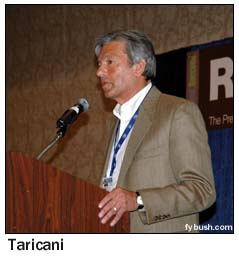 WJAR reporter
Jim Taricani was freed from prison, becoming a journalistic hero
for his refusal to disclose the source of a videotape that brought
down several Providence officials. WJAR reporter
Jim Taricani was freed from prison, becoming a journalistic hero
for his refusal to disclose the source of a videotape that brought
down several Providence officials.
In Sharon, Pennsylvania, "Old Shakey" came tumbling
down on April 20, as a crew pulled down the WPIC (790) tower
before it could collapse of its own accord.
New to the air: WBCR-LP (97.7 Great Barrington MA). Gone for
good: CJTN (1270 Trenton ON), moved to FM.
MAY: Preston and Steve returned to the Philadelphia
airwaves May 16 on their new home, WMMR (93.3), after a judge
freed them from their noncompete deal with Radio One.
In New York, Lee "Crazy Cabbie" Mroszak went to
prison for a year; the former Howard Stern sidekick and WXRK
overnight jock made the mistake of bragging on the air about
not paying his taxes. WCBS-TV fired reporter Arthur Chi'en after
he let some expletives slip during a live shot while being harassed
by fans of a certain pair of shock talkers. At month's end, the
reggaeton craze spread to the Big Apple dial, as WCAA/WZAA dropped
its "Latino Mix" to become "La Kalle." And
WOR departed its home of many decades at 1440 Broadway to move
into new digs down in the Wall Street area.
In New England, WMGX (93.1 Portland) completed its new tower,
replacing the one that collapsed in 2004. Down in Taunton, WPEP
(1570) agreed to go dark to allow WNSH (1570 Beverly) to increase
its day power, though the moves hadn't been completed at year's
end.
 Adult hits came
to Buffalo on May 16, as WBUF (92.9) ditched its rock format
to become the region's first "Jack." The WBBF
calls returned to the airwaves on the former WMNY (1120) in Buffalo,
creating no end of heartache for Rochester radio purists. WCLI
(1450 Corning) changed calls to WENI, while Binghamton's WYOS
(1360) picked up Air America. On TV, Time Warner chopped 22 jobs
at News 10 Now in Syracuse, moving many of the news channel's
operations to Albany. Adult hits came
to Buffalo on May 16, as WBUF (92.9) ditched its rock format
to become the region's first "Jack." The WBBF
calls returned to the airwaves on the former WMNY (1120) in Buffalo,
creating no end of heartache for Rochester radio purists. WCLI
(1450 Corning) changed calls to WENI, while Binghamton's WYOS
(1360) picked up Air America. On TV, Time Warner chopped 22 jobs
at News 10 Now in Syracuse, moving many of the news channel's
operations to Albany.
In Pennsylvania, WEEO-FM (103.7 McConnellsburg) dropped modern
rock and became top 40 "Hot 103.7." "K-Love"
replaced classic hits "Wuzz" on WUZI/WUZY in Johnstown,
which changed calls to WLKJ/WLKH. Johnstown's "Rock"
WQKK (92.1) became "Rocky" WRKW, paralleling new sister
station WRKY-FM in Altoona. Scranton's WVMW moved from 91.5 to
91.7, clearing the way for new WCIG (91.3 Carbondale) to debut
in October. WGBI (910 Scranton) gave up its classic calls so
the WBZU calls could be parked there after a stint in Wisconsin.
And two towers came down - WCBG (1380 Waynesburg PA) when
one of its guy wires was hit by a truck, and WHLI (1100 Hempstead
NY), where an aging tower was replaced with a brand-new self-supporter.
New to the air: WPKM (88.7 Montauk NY), relaying WPKN from
Bridgeport; CFPS-FM (97.9 Port Elgin ON), replacing CFPS 1490;
WXOJ-LP (103.3 Northampton MA); WKMY (91.1 Winchendon MA), with
"K-Love," on May 16. Gone, for now: travelers' information
CFYZ (1480 Toronto).
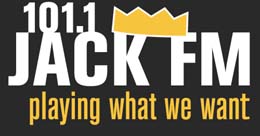 JUNE:
The June 3 flip of WCBS-FM to "Jack" pushed most
of the month's other news into the background, but there were
still a few other items of note. JUNE:
The June 3 flip of WCBS-FM to "Jack" pushed most
of the month's other news into the background, but there were
still a few other items of note.
Adult hits also came to Burlington (on the former WLKC "Alice"
103.3, now "MP103" WWMP and with a temporary simulcast
on WXAL 93.7 Addison, soon to become country WUSX), and to Montreal,
on low-power "Mike" CKDG (105.1).
Down in Brattleboro, an FCC raid on the "radio free brattleboro"
studios put that unlicensed station out of business, apparently
for good, and delayed the start of legal LPFM WVEW-LP (107.9),
which was to have used much of rfb's equipment.
Paul LaCamera retired from WCVB (Channel 5) in Boston after
many years at the helm, but he wouldn't stay retired long, returning
to the industry in the fall to lead WBUR (90.9) back to financial
stability.
 Speaking of
TV, WIXT (Channel 9) in Syracuse ditched those calls, becoming
WSYR-TV. The WIXT calls were parked in Little Falls, on the sports
station formerly known as WLFH. Speaking of
TV, WIXT (Channel 9) in Syracuse ditched those calls, becoming
WSYR-TV. The WIXT calls were parked in Little Falls, on the sports
station formerly known as WLFH.
In Pennsylvania, WITK (1550 Pittston) exited its simulcast
of WICK and began simulcasting Catholic WQOR (750 Olyphant).
WHHS in Havertown returned to the air on its new frequency, 99.9,
thanks to some help from other broadcasters in the Philly market
who wouldn't let the little class D high school station die.
"Cool Pop" fizzed out in Harrisburg, as the pop-top
40 format on WCPP (106.7 Hershey) gave way to a more sedate AC
"Mix" on June 30, with new WMHX calls quickly following.
In Canada, the CRTC granted three new stations in Ottawa,
none of which made it on by year's end. CIKZ (106.7 Kitchener-Waterloo)
was granted its long-desired move to 99.5, in hopes of avoiding
some of the interference that plagued its original channel.
Admirers of Major Edwin Howard Armstrong saluted the inventor's
memory by swarming his Alpine, N.J. transmitter site for a commemoration
of the 70th anniversary of FM, complete with the first transmissions
on the Major's old 42.8 frequency in many decades.
New to the air: WGBH's WZAI (94.3 Brewster), on June 7, and
WOOL-LP (100.1 Bellows Falls VT), on June 25.
 JULY: Some of
the month's biggest news was technical, as WPEN (950 Philadelphia)
fired up its new 21 kW night transmitter at the WWDB (860) site
in East Norriton, and WBOT (97.7 Brockton) became a Boston contender
with the debut of its new signal from Blue Hill in Milton. In
Erie, WERG moved from 89.9 to 90.5 and powered up, while in Huntsville,
Ontario, the CBC was granted a frequency change for its CBL-FM-1
Radio Two transmitter, moving from 104.7 to 106.9. JULY: Some of
the month's biggest news was technical, as WPEN (950 Philadelphia)
fired up its new 21 kW night transmitter at the WWDB (860) site
in East Norriton, and WBOT (97.7 Brockton) became a Boston contender
with the debut of its new signal from Blue Hill in Milton. In
Erie, WERG moved from 89.9 to 90.5 and powered up, while in Huntsville,
Ontario, the CBC was granted a frequency change for its CBL-FM-1
Radio Two transmitter, moving from 104.7 to 106.9.
In Corning, AC WCBA-FM (98.7) swapped calls and formats with
oldies WGMM (97.7 Big Flats). Later in the year, the 97.7 calls
would change again, to WENI-FM, and WCBA (1350) would drop its
oldies simulcast with WGMM and go sports. On Long Island, silent
WGSM (740) changed calls to WNYH, remaining silent. The end of
AP's All News Radio meant WDNB (102.1 Jeffersonville NY) flipped
to "Thunder Country," while WYSL (1040 Avon) picked
up more CNN content. Utica's WRUN (1150) began simulcasting the
WAMC public radio service under its new ownership.
The much-rumored ESPN sports format finally arrived at Boston-market
WAMG/WLLH July 24, complete with a local afternoon show.
WSUB (980 Groton CT) flipped from news-talk (now on WXLM 102.3)
to Spanish AC "Magia 980," while WGMR (101.1 Tyrone
PA) dropped modern rock for top 40 "G101" and WLOA
(1470 Farrell PA) joined the "Wexy 107" oldies simulcast
that, oddly, didn't actually include WEXC (107.1 Greenville),
where the format had originated.
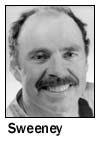 Steve Sweeney
lost his morning gig on Boston's WZLX, and PD Pete Salant found
a new gig, programming Connecticut's country WWYZ. Steve Sweeney
lost his morning gig on Boston's WZLX, and PD Pete Salant found
a new gig, programming Connecticut's country WWYZ.
On the news side of the fence, WBUR axed its "Connection"
talk show to save money, with host Dick Gordon decamping to North
Carolina's WUNC to start a new show there. WBZ-TV opened a news
bureau in Worcester.
AUGUST: The music industry dominated the month's headlines,
as New York attorney general Eliot Spitzer reached a $10 million
settlement with Sony Music, releasing paperwork that exposed
several program directors' tangled relationships with indie promoters
and record companies.
In Boston, former WBIX owner Brad Bleidt entered a guilty
plea to charges that he defrauded his investment clients; he'd
end up being sentenced to more than 11 years behind bars for
his crimes.
 WBZ radio reporter
Flo Jonic departed the station amidst headlines that claimed
the station had withheld one of her reports at the government's
request, to cover up security flaws at several federal offices
in Boston. Her colleague Jay McQuaide left for the world of PR,
and the boss who hired them both, former WBZ PD Brian Whittemore,
returned to the market to run the show at WRKO. WBZ radio reporter
Flo Jonic departed the station amidst headlines that claimed
the station had withheld one of her reports at the government's
request, to cover up security flaws at several federal offices
in Boston. Her colleague Jay McQuaide left for the world of PR,
and the boss who hired them both, former WBZ PD Brian Whittemore,
returned to the market to run the show at WRKO.
In Pittsfield, Alex Seseske retired after decades on the air
at WUPE and WMNB. In Portland, Mark Persky was out again after
just a month at "Frank" WFNK.
Longtime Scranton radio owner Doug Lane was convicted of sexually
abusing minors and possessing child pornography. Lane, 61, was
sentenced in October to serve at least 14 and possibly up to
30 years in prison. In December, the FCC approved an agreement
under which Lane's stations - the former WWDL (104.9) and the
AM pair of WICK (1400)/WYCK (1340) - will be sold (as noted above
in "Sales"), with a portion of the sale price going
to victims' rights groups, and the remainder being put in escrow
pending an appeal of the conviction. If the conviction stands,
the money goes to Lackawanna County.
In Pittsburgh, a flood damaged the studios of KDKA radio and
television, disrupting several KDKA-TV newscasts.
Most staffers at the CBC were locked out mid-month, leaving
the national radio and TV services without much of their original
programming for almost two months until both sides came to terms
on a new contract, just in time for the season premiere of "Hockey
Night in Canada." Elsewhere in Canada, "Toronto 1"
gave way to "SUN TV" under the new ownership at Toronto's
CKXT-TV; CKLY (91.9 Lindsay ON) became adult hits "Bob,"
and CJLX in Belleville moved from 92.3 to 91.3 and boosted power.
Rochester's WUHF-TV (Channel 31) entered into a joint services
agreement with Nexstar's WROC-TV (Channel 8) that resulted in
the end of "News Central" on WUHF and the startup,
in November, of a WROC-produced 10 PM newscast on the Fox affiliate.
 New
London's WNLC (98.7) dropped standards for classic hits; WINE/WPUT
in Danbury, Connecticut dropped standards for ESPN sports; WCBG
(1380 Waynesboro PA) returned to the air with a top 40 simulcast
(of WPPT 92.1) instead of sports; WMJQ (105.5 Brockport NY) moved
to 104.9; WANB (1580 Waynesburg PA) changed calls to WXXP; and
WQXA (1250 York PA) changed calls to WYYC. New
London's WNLC (98.7) dropped standards for classic hits; WINE/WPUT
in Danbury, Connecticut dropped standards for ESPN sports; WCBG
(1380 Waynesboro PA) returned to the air with a top 40 simulcast
(of WPPT 92.1) instead of sports; WMJQ (105.5 Brockport NY) moved
to 104.9; WANB (1580 Waynesburg PA) changed calls to WXXP; and
WQXA (1250 York PA) changed calls to WYYC.
New to the air: CFRK (92.3 Fred FM) in Fredericton, N.B.;
New Hampshire Public Radio's WEVS (88.3 Nashua), on Aug. 9; WLIX-LP
(94.7 Ridge NY), on August 15.
SEPTEMBER: Boston's (or should that be Sag Harbor's?)
Jay Severin disappeared from the afternoon slot on WTKK (96.9),
first amidst a controversy surrounding a "Pulitzer Prize"
he never received, then amidst contract negotiations that found
him starting a new national show with Westwood One. (He'd remain
off WTKK for the rest of the year, with rumors swirling of a
move to WBZ, but his new show will instead return to WTKK in
evenings in 2006, with former DC talker Michael Graham filling
the afternoon slot.)
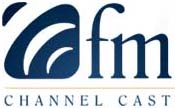 "FM Channelcasting"?
That was the Morey Organization's response to satellite radio,
replacing its three East End signals (WBON/WDRE/WLIR) with nonstop
jockless music, including something called "Neo Breeze."
It didn't last - by December, the stations were back to hard
rock ("The Bone"), dance ("Party 105") and
modern rock ("WLIR"), albeit still with a minimal commercial
load. "FM Channelcasting"?
That was the Morey Organization's response to satellite radio,
replacing its three East End signals (WBON/WDRE/WLIR) with nonstop
jockless music, including something called "Neo Breeze."
It didn't last - by December, the stations were back to hard
rock ("The Bone"), dance ("Party 105") and
modern rock ("WLIR"), albeit still with a minimal commercial
load.
New steel was the story in New York, as WFUV ended its long
battle with its neighbors at the Botanical Garden by erecting
a new tower on an apartment building a mile away, while WOR began
building its new tower site in the Jersey Meadowlands.
Scranton's WWDL stunted as "Chet FM," with the engineer
playing the tunes, before emerging as adult hits-ish "River,"
WWRR. Kingston's WKXP segued from "Kix" to "Wolf,"
still with country. WDDM (89.3 Hazlet NJ) took new calls WFJS
and flipped to Catholic programming. In New Hampshire, WMEX (106.5
Farmington) segued from oldies to AC as "X106.5," while
WVFM (105.7 Campton) parked the WUSX calls, then sent those to
93.7 in Addison VT (for its new "US 93.7" country format)
and picked up the WLKC calls that were shed from 103.3 Waterbury
VT.
Montreal's CINW (940) flipped from all-news to news-talk as
"The New 940AM Montreal."
WTHK (97.5 Burlington NJ, late of Trenton) applied to move
to a new transmitter site right in Philadelphia, sharing a tower
with WJJZ (106.1) at the historic Wyndmoor tower on the city's
northern edge.
On TV, Philly's WB affiliate, Tribune's WPHL (Channel 17),
announced it would close its newsroom Dec. 10, contracting with
NBC's WCAU to produce the station's newscasts. Meanwhile in Boston,
Diane Sutter transformed WNDS (Channel 50) in Derry, N.H. into
"My TV," WZMY, with a new lineup that included local
talk shows and, of course, Al Kaprielian's weather.
 OCTOBER: The
month began with a new sports format in Philadelphia, where oldies
vanished from WPEN (950) to give the city its second all-sports
talker. OCTOBER: The
month began with a new sports format in Philadelphia, where oldies
vanished from WPEN (950) to give the city its second all-sports
talker.
In Boston, sports talker WEEI (850) shed night host Ted Sarandis,
while sister station WRKO (680) morning co-host Peter Blute exited
amidst changes that turned the morning show more towards all-news.
Flooding silenced several coastal stations for a weekend,
including WMJC (94.3 Smithtown NY) and WDDZ (550 Pawtucket RI).
Radio One finally put its "WILD" brand on FM, changing
WBOT (97.7 Brockton) to WILD-FM and installing a black gospel
format on WILD (1090 Boston), to be replaced by the company's
new urban talk format in 2006. (The AM station also moved transmitter
sites, relocating to the nearby WXKS 1430 facility in Medford.)
The ongoing payola investigations cost another PD his job,
as Michael Saunders quietly exited New York's WWPR.
Also exiting were New Hampshire Public Radio GM Mark Handley,
to sail the world, and veteran WSBS (860 Great Barrington) morning
man Nick Diller, to tend his grill. New Hampshire talk host Arnie
Arnesen was ousted from WNTK/WUVR, and by year's end would lose
her remaining station, WTPL in Concord, as well.
In the Maritimes, Rogers launched three all-news signals on
Oct. 11: CJNI Halifax (News 95.7), CHNI Saint John (News 88.9)
and CKNI Moncton (News 91.9).
Christmas came early to the Jersey Shore, as WTTH/WDTH dropped
their urban AC "Touch" format and began spinning holiday
tunes on Oct. 13.
 Howard Stern closed
out the month by announcing that his replacements would be David
Lee Roth in the east, Rover in the midwest and Adam Carolla out
west. The first post-Stern format change was at Philadelphia's
WYSP, which took on the new "Free FM" branding right
after the show Oct. 28, dropping most of its music programming,
except late at night and on weekends. Howard Stern closed
out the month by announcing that his replacements would be David
Lee Roth in the east, Rover in the midwest and Adam Carolla out
west. The first post-Stern format change was at Philadelphia's
WYSP, which took on the new "Free FM" branding right
after the show Oct. 28, dropping most of its music programming,
except late at night and on weekends.
More format and call changes up and down the dial: WNSX (97.7
Winter Harbor ME) to "Smooth Rock" under its new local
ownership; WCFR (96.3 Walpole NH) to WPLY-FM, returning the WCFR
calls to what had been WNBX (1480 Springfield VT) in November;
WTWK (1070 Plattsburgh NY) from Air America to ESPN sports, sending
Air America across the lake to WVAA (1390 Burlington VT); WMAS
(1450 Springfield MA) from talk to oldies; WXCT (990 Southington
CT) from Spanish to talk; WADB (1310 Asbury Park NJ) from standards
to country; WYNS (1160 Lehighton PA) from sports to religion,
picking up the WBYN calls and format as Nassau prepared to acquire
WBYN-FM (107.5 Boyertown PA); WTTC-FM (95.3 Towanda PA) from
country to classic hits "The Bridge"; WTTC (1550 Towanda)
from country to ESPN sports "The Zone"; WWTR (1170
Bridgewater NJ) from its WMTR oldies simulcast to EBC Indian
programming (moving off WTTM 1680 Princeton); WHAZ-FM (97.5 Hoosick
Falls NY) back on the air, simulcasting WHAZ 1330 Troy before
relaunching as "Gospel Gold" in December; WBLF (970
Bellefonte PA) replacing months of stunting with news-talk for
State College; and WPNT (1340 Connellsville PA) to WYJK.
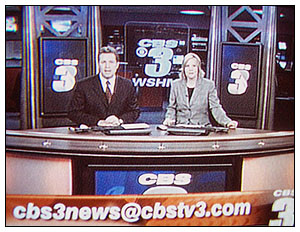 On TV, WSHM-LP (Channel
67) in Springfield launched its local news (under the "CBS
3" brand) October 13, with former Rochester/Albany newsman
Doug Lezette as news director and main anchor. State College
public broadcaster WPSX (Channel 3) changed calls to WPSU-TV,
with the WPSX calls replacing WPSB on 90.1 in Kane PA. On TV, WSHM-LP (Channel
67) in Springfield launched its local news (under the "CBS
3" brand) October 13, with former Rochester/Albany newsman
Doug Lezette as news director and main anchor. State College
public broadcaster WPSX (Channel 3) changed calls to WPSU-TV,
with the WPSX calls replacing WPSB on 90.1 in Kane PA.
New to the air: WKYJ (88.7 Rouses Point NY, on 10/1); religious
WVBV (90.5 Medford Lakes NJ, on 10/27); WCIG (91.3 Carbondale
PA, on 10/30). Returning: WNYH (740 Huntington), with a repeating
loop of gospel music, and WSMN (1590 Nashua), from a low-powered
temporary transmitter at the WSNH (900) site. In Maine, new WMDR-FM
(88.9 Oakland) launched Oct. 24 as "Zap FM," picking
up some of the religious programming from WMDR (1340 Augusta),
which itself relaunched with southern gospel. Gone for good:
never-built WJGK (1200 Kingston), replaced by a new 1200 CP in
Highland, near Poughkeepsie, also with the WJGK calls.
NOVEMBER: Everything gets to Pittsburgh, eventually
(except reggaeton, perhaps) - and adult hits finally arrived
November 1, as WRRK (96.9 Braddock) relaunched as "Bob FM."
Hartford's WDRC-FM (102.9) flirted with variety hits imaging,
too, but settled down with classic hits replacing its oldies.
Transmitter sites were all over the news, too: in Newton,
city officials finally approved the long-delayed project to rebuild
the WUNR (1600) site to take on two new tenants, WKOX (1200)
and WRCA (1330); out west, Entercom tried moving WAAF (107.3
Westborough) from Paxton to Stiles Hill in Boylston, only to
run into multipath problems that sent the station running back
to its old site, at least for a while. In New Jersey, WTTM (1680)
moved from Princeton to Lindenwold, testing its new site near
Camden with "T.E.D.," the "Total Entertainment
Device" programmed by engineer Neal Newman, while Press
won FCC permission to move WKOE (106.3 Ocean City) to 106.5 in
Bass River Township, closer to Atlantic City.
Veteran Maine jock Bud Sawyer was ousted from WLAM (1470 Lewiston),
which flipped from standards to ESPN sports.
In New Hampshire's Lakes Region, WEMJ (1490 Laconia) debuted
a new "Visitors Information Radio" format. Rhode Island's
WBLQ (88.1 Block Island) became "K-Love" WKIV, with
the WBLQ calls moving to the former WCTD-LP (96.9 Ashaway).
In Canada, the CRTC denied TV Niagara's application for a
new TV station to serve the Niagara Region, and in Kitchener-Waterloo,
CKWR (98.5) dropped its "Your FM" slogan, went all-Christmas,
then emerged at year's end as simply "CKWR."
New to the air: classic hits "Eagle" WWCF (88.7
McConnellsville PA), on 11/28; Humber College's CKHL (96.9 Toronto),
on 11/29.
 DECEMBER:
WABC returned "Musicradio 77" to the airwaves,
at least for four hours each Saturday night, delighting oldies
fans in New York and beyond. Oldies fans in Philadelphia weren't
quite so lucky, as veteran jock Hy Lit settled his age-discrimination
suit against Infinity (renamed CBS Radio mid-month) by agreeing
to leave the station; he's now running a webcast instead. DECEMBER:
WABC returned "Musicradio 77" to the airwaves,
at least for four hours each Saturday night, delighting oldies
fans in New York and beyond. Oldies fans in Philadelphia weren't
quite so lucky, as veteran jock Hy Lit settled his age-discrimination
suit against Infinity (renamed CBS Radio mid-month) by agreeing
to leave the station; he's now running a webcast instead.
Providence morning man Gary DeGraide left WWLI (105.1 Providence)
at month's end. And of course the most publicized departure in
radio history took place Dec. 16, when Howard Stern signed off
terrestrial radio with a street rally outside the WXRK studios,
proclaiming himself and his listeners "the last of a dying
breed" and marching to his new studios at Sirius Satellite
Radio.
 The Stern fallout
was immediate in Albany, where WQBK/WQBJ dropped its "Edge"
modern rock format to go classic rock as "Q103"; in
New York itself, WXRK remained on autopilot until the launch
of "Free FM" WFNY-FM on January 1. The Stern fallout
was immediate in Albany, where WQBK/WQBJ dropped its "Edge"
modern rock format to go classic rock as "Q103"; in
New York itself, WXRK remained on autopilot until the launch
of "Free FM" WFNY-FM on January 1.
Across town, WOR might have been better off on autopilot -
instead, it announced the departure of Bob Grant from the afternoon
slot and his replacement by chef Rocco DiSpirito, only to have
DiSpirito promptly leave the station as well. What next? That'll
be a story for 2006.
WKZE (1020 Sharon CT) dropped its AAA FM simulcast to pick
up progressive talk; WFAD (1490 Middlebury VT) flipped to ESPN
sports; WHGT (1590 Chambersburg PA) came back from a year of
silence with religion; CKMB (107.5 Barrie ON) segued from "Star"
to "Kool FM" - and in Pittsburgh, WLTJ (92.9) touched
off no end of message-board speculation by applying for new calls
WBZB, then withdrawing the request.
And at year's end, the axe fell at KDKA (1020 Pittsburgh),
where veteran talkers Mike Pintek, Mike Romigh and Paul Alexander
were abruptly shown the door. What will the station sound like
in 2006?
With that, we get ready to close the book on our twelfth
year at the keyboard and head for number thirteen. We hope you've
enjoyed the ride with us - and if you haven't yet shown your
support for
our efforts, we hope you'll take a moment and make your subscription
contribution for 2006. (Just follow that link above, and remember
that all contributions at or above the $60 level get a free 2006
Tower Site Calendar!)
NERW's Year-End Rant
So it's that time again, as we don the official NERW Prognostication
Cap (it's sort of a faded blue, with a big red "B"
on it, and a little "World Series '04" insignia on
the side) and do some deep thinking about the changes and challenges
that face the medium we all love.
These are interesting and uncertain times for radio. "Nobody
knows anything," as the screenwriter William Goldman famously
said about Hollywood, and the same is true about the radio industry
as it confronts perhaps the biggest transitions to be hurled
its way since the advent of television half a century ago forced
the business to reinvent itself.
Back then, of course, radio not only survived but thrived.
It did so, we'd submit, because it figured out what it was that
only radio could provide. Back then, that was music - lots of
it, usually before it could be heard anywhere else. It was super-local
information, in small towns and medium-sized cities where television
news didn't exist or was, at best, a once-nightly affair. It
was the sort of intimate, one-on-one communication (even if the
"one" was really just one of millions of listeners)
that no mass medium before or since has really been able to duplicate.
It was a great run while it lasted. And while it's far from
over, few would argue that many of the functions for which radio
once held pride of place have been supplanted by new technologies.
The days of waiting through a long list of data for a particular
school closing or stock quote or livestock price - or even today's
number one song - are long gone, and in a few years most of those
radio staples will be as dead as the radio soap opera or live
big band performance is today.
While that phase of radio's existence is drawing to a close,
though, radio itself is far from dead. In the aftermath of Hurricane
Katrina, it was the "United Radio Broadcasters" simulcast,
including the powerful voice of New Orleans' WWL radio, that
brought critically important information - and companionship
- to the victims of that storm scattered far and wide around
the country. Talk radio of all flavors was a vital part of the
political debate in a most politicized year. Small-town stations
like WLNG on Long Island's East End, WHLM in Bloomsburg, PA,
WKTJ in Farmington, Maine and WDEV in Vermont tied their communities
together just as they've always done. (And, we'd hasten to note,
just as they'll continue to do; it's stations like these that
have the least to fear from the changes we'll discuss below.)
Big all-newsers like WCBS and KYW and WBZ brought the headlines,
the scores and the traffic to commuters with an efficiency (one
relatively inexpensive transmitter to millions of inexpensive
receivers) that no WiMax or cellphone technology is likely to
match for many years to come. Sirius and XM brought niche formats
and programming to country fans in Manhattan, Tigers fans in
Rochester (don't laugh - we know one!), dance-music aficionados
in northern Maine and, soon, Howard Stern true believers everywhere.
What's that, you say? Yes, we did just mention satellite radio
in the same breath as "terrestrial radio," and that's
the point of our little Rant this year: Radio is Radio, no
matter how it's delivered.
This is, of course, heresy in some circles. There are broadcasters
(and broadcasting associations) who are firmly convinced that
there's some magic combination of attack promos, head-in-the-sand
willful ignorance and HD Radio will somehow make the satellite
broadcasters go away.
That won't happen, and it won't happen specifically because
the satellite broadcasters have figured out (and rather quickly,
at that) just what it is that they can do better than any other
medium. Not everyone (and probably not even 25 percent of everyone)
feels the need to have access to every NHL game, or to the myriad
of music formats on the birds, or to hear a 24-hour updated loop
of information about the daily whereabouts and activities of
Howard Stern. Aggregate each of those niche audiences, though,
make receivers widely available at inexpensive prices, and promote
the heck out of it, and suddenly those $12.95 monthly checks
start adding up pretty quickly.
The listeners sending in those $12.95 payments each month
aren't doing it because there's any particular magic to "satellite"
radio. They're not doing it for the sound quality, at least if
our road tests of both systems recently are any indication. They're
doing it because they like radio - and because the particular
sort of radio they want happens to be most efficiently made available
over a national satellite system rather than over a local transmitter.
(And it bears noting that no small number of talented radio people
are now toiling for XM or Sirius instead of Clear Channel
or CBS or Cumulus, simply because their talents are, for the
moment, best utilized there. Would anyone argue that what Cousin
Brucie or Phlash Phelps or Jonathan Schwartz are doing is any
less radio because it's not being heard over a terrestrial transmitter?)
It's entirely understandable that some broadcasters find this
change alarming. We genuinely feel for people like the staffer
at a daytime-only AM religious outlet who's upset because many
of the national programs his station carries are also heard on
the satellite providers, who can offer 24-hour programming when
his station has to sign off at sunset. Technological advances
have never been kind to the daytimers, and to the extent that
they've thrived, it's been by carving out ever more local niches
while programming of broader interest moves to signals for which
it's better suited. In the sixties and seventies, it was broad-appeal
music programming migrating to FM; now it's just about anything
that's not truly local moving to the national platforms the satellite
providers offer. Even so, we're seeing some truly remarkable
prices being paid for rather limited AM signals, an indication
that there are still radio people who believe they can put even
those signals to a good use. (And indeed, there are plenty of
niches still left to be filled by those humble stations, especially
as multilingual radio continues to grow in places large and small.)
Into this fray comes "HD Radio," and we can't let
the Rant go by without a few words on this heated topic. We still
have deep reservations (as do, at least privately, most of the
engineers we know) about whether the AM system can be implemented
widely and after dark without causing intolerable levels of interference
to existing reception, and we're unconvinced, as yet, that the
improved audio quality it offers, impressive though it is, will
be worth the expense and the tradeoffs to more than a handful
of broadcasters.
We're more optimistic about the FM system, and whatever we
think of it, it's finally gaining critical mass on the transmission
end. By the end of 2006, it's safe to say that listeners in most
medium and large markets will have access to numerous HD FM signals.
We're cautiously heartened by the recent alliance among many
of the larger broadcast groups to coordinate program offerings
on their HD subchannels, and even more so by their promise to
finally put some muscle into promoting the medium and into making
receivers, so far painfully elusive, available in larger quantities
and at lower prices.
Those delays in making HD receivers available, and the lack
of a truly persuasive hook to get consumers to put the available
receivers at the top of a long list of new gadgets vying for
their dollars, has the potential to be the nail in the new medium's
coffin. (Again, there's the essential question - what is it,
exactly, that HD Radio can provide better than any other medium
that's already out there? So far, only the prospect of multicasting
seems to be a plausible answer.)
Need it have ended up this way, though? There's a fantasy
that we've been kicking around for a few months now, and it goes
something like this - what if, back when both satellite radio
and HD Radio were still in the development phase, the parties
involved hadn't been quite so suspicious of each other?
What if those millions of satellite receivers now riding around
in auto dashboards and home cradles had all emerged from the
factory with HD Radio capability built into them? What if some
of that local HD Radio bandwidth could have been used to send
out data to insert local news, traffic and ads - provided by
local broadcasters, in some sort of revenue-sharing agreement
- into otherwise national programming on the satellites? What
sort of cross-promotion might have resulted from the ability
to insert a "tune to 1030 now for more local news"
message into the satellite talk programming?
How much satellite bandwidth could be put to better use if
there were no need for the painfully-compressed "local into
national" traffic and weather channels on the birds? What
if some of the few AM stations that still truly take advantage
of that band's broad nighttime coverage - the WWLs and WBZs and
WGNs - were able to use the satellites to bring their programming
to a national audience, all day long, with no skywave fading
or propagation vagaries? What sort of competitive advantage might
one or the other of the competing satellite services have enjoyed,
had it been able to partner with sufficiently forward-looking
"traditional" broadcasters to promote the ability of
both media to do what each does best?
What if those new local HD subchannels - now with millions
of receivers in the field ready to receive them - were simply
part of a larger "advanced radio" dial, living side-by-side
with the national channels from the satellite and the local analog
AM and FM broadcasts, offering listeners not just 50 or 100 choices
on the dial but potentially 200 or more, some national, some
local, all delivered over a single receiver?
And what if all the promotional firepower that's being expended
to sell listeners on satellite radio or terrestrial HD
radio were instead used simply to promote "radio,"
in the face of the many other entertainment options competing
for consumers' limited time and money?
Again, our thesis: Radio is Radio, no matter how it's delivered.
Listeners know it. Programmers know it. The television industry
figured it out years ago, and today viewers flip back and forth
between local stations and national networks on a single cable
or satellite lineup without a second thought, as witness the
lack of public outcry over the impending move of "Monday
Night Football" from ABC to ESPN.
Transitions like these are never painless. Many stations never
really recovered from the onslaught of TV in the fifties, and
many of those AM stations that survived TV and thrived in radio's
second golden age of the fifties and sixties were themselves
swept away by the blossoming of FM in the seventies and eighties.
The stations today that offer a nonstop diet of syndicated programming
or automated music will face ever-tougher competition from satellite
radio, portable music players and, perhaps, the eventual availability
of widespread wireless data services.
Those stations may not make it in the long run. But we firmly
believe that Radio itself will, on both a local and a national
level, and we're looking forward to another year of writing about
it all.
What do you think? We welcome your comments by e-mail at "rant"
at fybush.com, and we'll print them beginning next week. (Be
sure to let us know if you don't want us to use your name!)
And as we do every year, we close out our Year in Review by
remembering the many great radio and TV people our region lost
in 2005.
In Memoriam
- NORM RESHA, 59, Boston's "Calling All Sports" founder
and host (1/7)
- WILLARD BISHOP, 78, founded CKEN/CKWM Kentville, N.S. (1/15)
- DAN HOLTBY, 67, VP/sales at CHUM Ottawa (1/16)
- MORT FEGA, 83, New York jazz DJ (1/21)
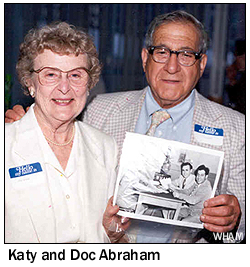
- GEORGE "DOC" ABRAHAM, 89, Rochester garden show
host (1/28)
- JOSEPH SHULER, 60, former WKNY Kingston GM (2/1)
- ROBERT McCABE, 84, former Syracuse DJ (2/1)
- JIM McCANN Sr., New Hampshire station owner (2/4)
- BOB McADOREY, 69, Toronto DJ and Global TV anchor (2/5)
- WALLY PARKER, ABC announcer and former New York DJ (2/15)
- Dr. GENE SCOTT, 75, former WHCT Hartford owner and TV preacher
(2/21)
- ANTHONY DiMARCO, 46, Watertown LPTV owner (2/23)
- MARK "THE SHARK" DRUCKER, 48, KYW entertainment
reporter (2/23)
- JIM GASH, former WNEW newsman (3/3)
- BILL KNUPP, 72, former WICU anchor (3/13)
- BILL GREEN, 91, former WHDH studio musician (3/14)
- "UNCLE" GUS BERNIER, 85, New Hampshire kiddie TV
host (3/19)
- TED BROWN, former WNEW and WNBC jock (3/22)
- QUENTIN MIGLIORI, 56, Boston DJ (3/26)
- ROBERT W. NEILSON, former WNAK Nanticoke GM (March)
- "DOCTOR" DON ROSE, 70, former WFIL, San Francisco
jock (3/30)
- STUART T. "RED" MARTIN Jr., 91, WCAX-TV founder
(4/2)
- TOM STAR, 56, Talk America founder (4/22)
- JOHN F. WHITE, former WQED, NET president (4/29)
- JIM O'BRIEN, 62, former Syracuse DJ (4/30)
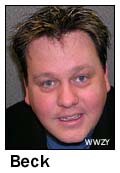 ROBERT REDMOND,
76, CHSC, CJEZ founder (5/7) ROBERT REDMOND,
76, CHSC, CJEZ founder (5/7)
- NATE TOWNSEND, 30, former WPAC/WSLB newsman (5/16)
- KATY ABRAHAM, 90, Rochester garden show host (5/24)
- J.P. VILLAMAN, 46, Red Sox Spanish broadcaster (5/30)
- GEORGIE WOODS, 78, former WDAS/WHAT jock (6/18)
- WILLIE TWYMAN, 45, former New Jersey 101.5 overnight host
(6/25)
- JEFF "BIX" BIXBY, 61, Pennsylvania engineer (6/25)
- NORM PRESCOTT, 78, former WORL/WHDH/WBZ jock (7/2)
- ANDY WIERNASZ, 79, WHMP polka host (7/20)
- JOE O'BRIEN, 90, longtime WMCA/WNBC/WHUD jock (7/24)
- ANDY (RAGE) RAJCOK, former Connecticut jock (7/28)
- ALAN FREDERICKS, 70, "Night Train" host (7/31)
- HAL RAYMOND, 70, former WSBA/WOYK morning man (8/9)
- ED BECK, 33, New Jersey DJ/station manager/voice talent (8/24)
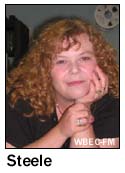 SHARON
(STEELE) BROPHY-FORST, 38, WBEC-FM morning co-host (9/15) SHARON
(STEELE) BROPHY-FORST, 38, WBEC-FM morning co-host (9/15)
- RON ROHMER, 74, longtime New Haven morning man (9/25)
- NELSON GOLDBERG, 76, former Pittsburgh station owner (WKPA/WYDD)
(9/25)
- VANCE McBRYDE, 80, former WICU weatherman (10/6)
- CHARLES (CLAVERIE) ROCKET, 56, Providence reporter turned
comedian (10/7)
- TOM CHEEK, 65, legendary Blue Jays broadcaster (10/9)
- JACK WHITE, 63, veteran Providence reporter (10/12)
- DICK GALIETTE, 72, WTNH sportscaster, Yale football play-by-play
man (10/21)
- JIMMY MIADES, WHDH-TV director (10/21)
- ERICH "E.C. LA ROCK" COSTON, 47, WDAS-FM jock (10/23)
- GLENN "BUMPER" MORGAN (FREDERIC MERRIN), 57, Pittsburgh
jock (10/26)
- RICK "BWANA JOHNNY" JOHNSON, 56, former WWDJ, West
Coast DJ (10/28)
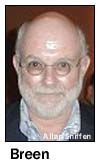 JULIAN BREEN, 63,
WABC/Greater Media programmer, consultant (10/29) JULIAN BREEN, 63,
WABC/Greater Media programmer, consultant (10/29)
- BRIAN MURPHY, former CKBY/CHEZ jock/programmer (10/31)
- DON GORDON, 74, former WMEX/WEEI newsman (11/12)
- DONNA ROSE, 49, New Jersey news anchor (11/15)
- BRIJENDRA "BRIJ" LAL, 81, New York radio news producer
(11/20)
- EDWARD "EDDY JO" JOSEPH, 88, former WHLD manager
(11/23)
- DAVE KURTZ, 73, WBEB founder and co-owner (11/24)
- DANA JONES, 88, former Pittsfield DJ (11/25)
- ALLAN WATERS, 84, CHUM founder and former chairman (12/3)
- RON DRAKE, 85, longtime WHP morning man (12/4)
- WALLY SCHWARTZ, former WABC GM (12/15)
- DEAN LEBO, 66, co-owner of WWII Shiremanstown, PA (12/29)
NorthEast Radio Watch is made possible by the generous
contributions of our regular readers. If you enjoy NERW, please
click here to
learn how you can help make continued publication possible. NERW
is copyright
2006 by Scott Fybush. |


